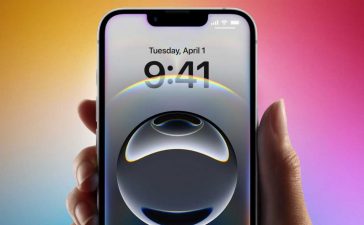If you’ll pardon the nod to a certain posterior-possessed 90s-era rap icon, after spending the past couple weeks with Google’s latest Pixel phones and pondering the devices’ bigger-picture significance, I’m left with one particularly cheeky thought charging through my head:
All of the big buts are gone. (Sorry, Sir Mix-a-Lot.)
Questionable cultural references aside, it really is true. The Pixel 8 and Pixel 8 Pro feel like the culmination of many (many, many) years of Google’s hardware efforts evolving and growing into a cohesive, compelling whole. And while previous Pixels have had plenty of good stuff goin’ for ’em, these latest Pixel phones are the first models where I’m left scratching my noggin to come up with any meaningful drawbacks — while also struggling to understand why these devices might not be the market-shattering smash hits they seem like they should be, at least on a surface level.
That’s not to say the new Pixels are perfect, of course. (Is anything?) The built-in temperature sensor is a silly gimmick, in its current form, for instance, and a handful of highly touted photo features are annoyingly absent at the devices’ launch. But the downsides are mostly now nits, and they pale in comparison to the exceptional, unmatched experience these products provide — not to mention the equally unmatched value their price and newly established seven-year support guarantee now delivers.
By this point, you’ve presumably read at least 0.2 zillion reviews of the Pixel 8 and Pixel 8 Pro — and maybe you’ve even had a chance to try out for the phones for yourself — so I’m not gonna bore you with all of the nitty-gritty details. What I want to talk about today is what could realistically keep the Pixel 8 phones from becoming the runaway success stories they by all counts oughta be.
[Psst: Got a Pixel? Any Pixel? Check out my free Pixel Academy e-course to find all the advanced intelligence lurking within your current phone!]
It’s a frustratingly familiar story — though there’s a teensy shred of hope this could be the year it changes.
Google Pixel perspective
First, for perspective: Google’s Pixel phones make up a miniscule part of the modern mobile landscape — particularly here in the US, where most current analyses put the Pixel at around 4% of the overall smartphone market.
That’s nothing to shake a stick at, mind you — selfie or otherwise — as we’ll explore more in a moment. But when you look at the expectations for the Pixel program out of the gate, it’s also not exactly where Google wanted to be by this point in its smartphone-crafting adventure.
Rewind with me for a sec back to the prehistoric era of 2016, when Google launched its first-ever Pixel phone. At the time, the company’s then-new head-of-hardware, Rick Osterloh, talked about his vision for the Pixel’s growth in an interview with the Verge:
Osterloh knows that “We certainly aren’t going to have enormous volumes out of this product. This is very first innings for us.” Google’s metric of success for Pixel won’t be whether it picks up significant market share, but whether it can garner customer satisfaction and form retail and carrier partnerships that Google can leverage for years to come.
That was eight years ago — the beginning. A year later, in 2018, Google hardware was officially “no longer a hobby,” as proclaimed by the next Osterloh-interview-driven article at (oh, yes) The Verge:
Last year was a coming-out party for Google hardware. This year is something different. It’s a statement that Google is very serious about turning hardware into a real business on a massive scale — just maybe not this year.
Cool, cool, cool. Buuuuuut:
While Osterloh expects the Pixel to “become big, meaningful business for the company over time,” right now his benchmark isn’t sales, it’s “consumer satisfaction and user experience.” So I ask: What about five years out? “We don’t want it to be a niche thing,” Osterloh says. “We hope to be selling products in high volumes in five years.”
In five years. That was 2017. And now, it’s 2023. Here we are.
The Google Pixel present
For all the positives we can say about Google’s Pixel 8 and Pixel 8 Pro in particular, there’s one tough truth that’s unavoidable in any Pixel-related pondering:
Most normal phone-shopper still don’t know what the hell a Pixel even is.
This isn’t a scientific measure, of course, but I also don’t think it’s something most folks would contest too heavily. Ask around among the non-tech-obsessed masses — or show a normal person in your life a Pixel phone you’ve just pulled out of your pocket — and the responses will likely land somewhere between “Pixel? What’s a Pixel?” and “Oh, is that Samsung’s latest Android?”
And that’s to say nothing about the broader perception problems around Android itself, as a brand, and the awkward complexity that creates.
Plain and simple, Google just hasn’t managed to break through the barrier of customer awareness with Pixels, whether we’re talking regular ol’ consumer phone-buyers or businesses looking at broader deployments. Regular people still don’t know what the brand represents — or often that it even exists, for that matter — and no matter how good the phones may get, that poses an existential problem.
Just ask HTC — the once-lauded Android device-maker whose phones were phenomenal, whose support promise was exceptional (for the time), and who struggled with marketing and awareness up until it quietly backed off and faded away from the mobile landscape entirely. (For our purposes here today, we’ll leave the company with a shred of of dignity and look past its awkward blockchain- and metaverse-centric “comeback” attempts.)
Fittingly enough, much of HTC’s phone-making prowess ended up landing inside Google, as part of the Pixel team. And fittingly enough, as a certain mobile-tech-obsessed loudmouth proclaimed at the time of that migration, all of that added intelligence still wouldn’t be enough to solve the Pixel’s most pressing problem.
Ahem — go, go, gadget time machine. Take us back to 2017:
Significant as [the Pixel’s critical success] is, though, ask an average non-tech-obsessed smartphone user what they think about the Pixel – and all you’re likely to get in response is a glossy-eyed stare. Google may be positioning the Pixel as a mainstream device and even marketing it as such, to a degree, but it hasn’t yet managed to break through that Samsung-scented wall and make its phone impactful in any broad and practical sense.
That’s a critical challenge – and one all the engineering talent in the world can’t help overcome. We’ve seen countless incredible phones come and go almost unnoticed in the realm of Android, particularly here in America. Their quality is but a tiny piece of the overall puzzle and almost becomes irrelevant. Without ubiquitous availability and an effective marketing message, hardly anyone sees, thinks about, or buys the damn things – and they drown in obscurity without ever making a meaningful splash.
That was six years ago. Like I said earlier, a frustratingly familiar story that just never goes away.
But, as I also hinted at a moment ago, there’s a sliver of hope for a light at the end of this tunnel.
The Google Pixel future
We’ve talked plenty about the trends around Pixel popularity, and that’s the one piece of this picture that offers an ounce of optimism about how the Pixel 8 and Pixel 8 Pro could be received and if they might be the Pixels that finally break through into mainstream conscience.
Long story short, while Google’s Pixel brand still represents a relatively meager, single-digit slice of the overall smartphone pie in America, it’s (a) reportedly taken the top spot for sales in Japan, which is pretty substantial, and (b) been consistently growing — substantially — quarter after quarter in other parts of the world, often with double- or sometimes even triple-digit growth year-to-year, while smartphones sales in general and sales specific to most other device-makers have been falling.
The scale may still be small, in other words, but the momentum is very real. And if there were ever products poised to push that momentum to meaningful new heights, the Pixel 8 and Pixel 8 Pro are absolutely them.
The key is Google focusing on the right messaging that’ll resonate with ordinary phone owners and make a memorable impact. The Pixel’s camera prowess and all the new eye-catching editing magic it offers are obvious strong points and easily visualized, tangible advantages. But it’s also easy to look at much of that stuff and say, “Eh. My current phone is good enough with taking photos. I don’t need anything else.”
Where the Pixel really stands out is in all the unique bits of Google intelligence it brings into the equation and the practical impact those elements add into your day-to-day life — things like the Pixel’s exceptional call spam screening system and its Call Screen feature, which can answer calls for you and lean on AI to interact with unknown callers so you’re barely even bothered by their interruptions. The Hold for Me feature, which takes over torturous holds for you and then notifies you when an actual (alleged) human comes back on the line, is another one of those things you never want to live without once you realize how helpful it can be.
And the updates — for the love of Goog, the updates. The Pixel’s long-standing advantage in the area of timely and reliable software update delivery has always been a difficult type of value to convey and get any “normal” phone owner to care about, important as those of us in these quarters may know it to be.
But with the Pixel 8 and Pixel 8 Pro, being able to say “Our phones will remain viable and safe for you to use for a full seven years, which is more than anyone else offers” — and to be able to break down a specific dollar figure of exactly how much money that’ll save you over the course of the device’s life — that’s the kind of information that can make an impact with anyone and emphasize what sets the Pixel apart.
The Pixel story so far has been one of baby steps and small, if promising, progress. This year’s Pixel 8 and Pixel 8 Pro represent the greatest opportunity yet for Google to embrace that momentum and push it forward to lofty new heights — a move that’d not only benefit the future of the Pixel product line but also benefit all of us by bringing added competitive pressure into the overall mobile market, no matter which types of devices we choose to use.
We know the phones have what it takes to make that happen. The question now is if Google has what it takes to convey that message effectively and turn its existing momentum into something more — no ifs, ands, or buts about it.
Don’t let yourself miss an ounce of Pixel magic. Come start my free Pixel Academy e-course to find tons of hidden features and time-saving tricks for your favorite Googley gadget.
Copyright © 2023 IDG Communications, Inc.












